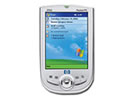'ZDNET Recommends': What exactly does it mean?
ZDNET's recommendations are based on many hours of testing, research, and comparison shopping. We gather data from the best available sources, including vendor and retailer listings as well as other relevant and independent reviews sites. And we pore over customer reviews to find out what matters to real people who already own and use the products and services we’re assessing.
When you click through from our site to a retailer and buy a product or service, we may earn affiliate commissions. This helps support our work, but does not affect what we cover or how, and it does not affect the price you pay. Neither ZDNET nor the author are compensated for these independent reviews. Indeed, we follow strict guidelines that ensure our editorial content is never influenced by advertisers.
ZDNET's editorial team writes on behalf of you, our reader. Our goal is to deliver the most accurate information and the most knowledgeable advice possible in order to help you make smarter buying decisions on tech gear and a wide array of products and services. Our editors thoroughly review and fact-check every article to ensure that our content meets the highest standards. If we have made an error or published misleading information, we will correct or clarify the article. If you see inaccuracies in our content, please report the mistake via this form.
HP iPAQ Pocket PC H1910


HP iPaq Pocket PC H1910
pros and cons
- Relatively inexpensive
- removable battery
- sharp screen
- super-compact design.
- No protective cover included
- not compatible with existing expansion sleeves and accessories
- headphone jack is not standard size.
- Editors' review
- Specs
It may not use the latest and greatest processor, but HP's iPAQ H1910 is the first Pocket PC we've seen that truly rivals the form factor of the Palm V. There's other good news to report about this compact unit, which is barely larger than its screen: it's relatively inexpensive; it boasts a sharp, bright screen; and it has a removable battery. On the downside, however, we're a little miffed that this iPAQ's headphone jack is not the standard size, which means that you can't use your favourite headphones with the device without buying an adapter. Also, no protective cover is included. If you can forgive those small shortcomings, this is a slick handheld that should appeal those who value form over performance.
Design
We're impressed that HP has managed to reduce the size of the H1910 without shrinking its screen. Toshiba's e310 and new e330/e335, for example, are thin and light but have the disadvantage of being longer than Palm devices, making them less pocket-friendly. Meanwhile, the H1910 measures 6.98cm by 11.3cm by 1.28cm -- a couple of centimetres shorter and narrower than most other Pocket PCs, which makes a big difference. And at just 120g, this device won't tear the seam out of your pocket.
At the bottom of the device, you'll find the standard Pocket PC quick-launch buttons on either side of an elegantly designed, four-way navigation control with a select button in its centre. This handheld's speaker is housed under the navigation button. Unlike some devices, the H1910 doesn't include a scroll wheel, but that's a relatively minor omission.
There's an LED at the top of the device that changes colours depending on the type of alert that it's sending. Up top, you'll also find a slot for adding Secure Digital (SD)/MultiMedia Memory card (MMC) media, while a record button and an IR port grace the unit's left side -- no ergonomic complaints to report there. Really, our only major gripe with the H1910's design is the inclusion of a smaller-than-standard headphone mini-jack. This means that unless you buy an adapter, you'll only be able to use the earbuds that ship with the product or a set of headphones that use a less common sub-mini-jack -- like the kind that you'd find on a cellphone. It's also worth noting that the included stylus may be a bit too small for some users. We suggest using a pen-based stylus, but we have a feeling that many people will choose to go with the tip of their middle or index finger instead.
To cut costs, HP doesn't include a cradle, just a cable that does double duty as a charging and synchronisation cord when used with the attached dongle. An optional cradle, which is nicely designed and has a separate slot for charging a second battery, is sold separately.
Features
As noted, you won't find one of Intel's new 300MHz or 400MHz XScale processors here; if you want that extra speed, you can step up to one of HP's high-end H5400-series iPAQs. The H1910 runs on a 200MHz Intel PXA250 processor, which appears to rival the performance of the 206MHz processor found in the first generation of Pocket PC 2002 handhelds. The unit also comes with 64MB of built-in memory (though only 48MB are accessible to the user), 16MB of ROM and the aforementioned SD/MMC slot for adding more storage. Another plus: the transflective, 65,536-colour TFT screen is quite good.
Unlike earlier iPAQs, this model's battery is removable -- a big plus since that allows you to swap in an extra cell if you purchase it separately. However, because the H1910 is significantly smaller than previous iPAQs, it's not compatible with existing expansion sleeves and accessories.
As far as software extras go, don't expect to find much, if anything. There's the usual assortment of demos, but you get only the full suite of Microsoft applications, which includes the Pocket versions of Word, Excel, Internet Explorer, Windows Media Player, Reader and Streets, along with a data-backup application.
Performance
Since this iPAQ doesn't have the fastest available processor, you won't get the kind of performance you'd expect from devices powered by Intel's 300MHz or 400MHz XScale processors -- particularly if the running application is optimised for XScale. The games we tested on the unit had some blips in the play from time to time, but as long as the action didn't get too intense, the H1910 ran them well enough. Sound quality is quite good, but since HP went with the aforementioned tiny headphone jack, you'll have to use the less-than-impressive earbuds that come with the unit -- unless you purchase an adapter that will let you plug in better headphones.
We were particularly impressed with the transflective screen, which appears to be one of the best on the market. Indoors, it's brighter than that of Toshiba's e330 and e335, and its white background has less grey in it. The display also did well outside -- we were able to read text on the screen in bright sunlight without a problem. Battery life was respectable, considering the unit's small 900mAh battery. Playing MP3s with the backlight set at 50 percent, the unit lasted for 3 hours and 44 minutes. However, the MP3s stopped playing after about 3 hours and 15 minutes. This was no match for the Toshiba e330's 4 hours 16 minutes or the Dell Axim's 6 hours 22 minutes.